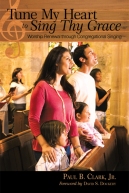 It is said of theological research that where you start out strongly influences where you end up. The same is true of so-called worship leading. Someone who is focused on an experiential goal as the point of worship will likely end up either elated with the thrill of dramatic moments in the course of a worship service, or frustrated that worshipers under his or her direction somehow miss the mark of the experience he or she has in mind, which, not incidentally, robs him or her of their own thrill as a worship leader, and of a sense of “success.” So, lest I slide too far and fast down the slope of cynicism, let me get back to the point of the question that I want to pose to you, especially if you have responsibility for planning and guiding in Christian worship environments. The question is, “Where do we expect to end up in worship?” I am primarily addressing corporate worship here, though the truth applies to any grouping for worship; congregational, festival, small group, or personal. (for more about these worship groupings see my book, Tune My Heart to Sing Thy Grace)
It is said of theological research that where you start out strongly influences where you end up. The same is true of so-called worship leading. Someone who is focused on an experiential goal as the point of worship will likely end up either elated with the thrill of dramatic moments in the course of a worship service, or frustrated that worshipers under his or her direction somehow miss the mark of the experience he or she has in mind, which, not incidentally, robs him or her of their own thrill as a worship leader, and of a sense of “success.” So, lest I slide too far and fast down the slope of cynicism, let me get back to the point of the question that I want to pose to you, especially if you have responsibility for planning and guiding in Christian worship environments. The question is, “Where do we expect to end up in worship?” I am primarily addressing corporate worship here, though the truth applies to any grouping for worship; congregational, festival, small group, or personal. (for more about these worship groupings see my book, Tune My Heart to Sing Thy Grace)
As a Baptist I am very familiar with experiential terminology. Indeed, our trust and faith in Christ, and our encounters with God in worship are peppered with experiential realities. We are, after all, human, and we humans feel things. Some encounters are easily articulated, while others seem beyond description. What’s more, a group of individuals is likely to experience God’s presence in different ways. Our emotions may run the gamut during times of Christian worship, from elation to deep sadness. From one time of gathered worship to another there may be very different emotional responses, even to the same or similar elements or acts of worship.
As worship ministry leaders, we must honestly ask ourselves to evaluate what we are expecting and aiming for in gathered worship. Do we allow our intention in gathered worship to be formed more by a desired mood or feeling than by a faith-rooted hunger to see the exalted Christ through Word and sacrament, and to seek His praise and glory through our response? Here are some questions to consider:
- Are we seeking to engender outward emotional response as an indicator of spiritual engagement?
- Do we elevate one type of emotional response over another, implying that those who respond differently than our intention are less spiritually engaged than others?
- Do we plan worship so as to prompt an emotional ride, crafting musical peaks and valleys based upon emotions in hopes that this will mimic interaction with a spiritual being?
- Do we plan out any components that might leave responsibility for spiritual engagement to the real entities involved, the Holy Spirit and the worshipers? (silence, Word read in public without comment, ordinance observance without augmentation)
- Is our singing rooted in the story of God or the feelings of humans?
Those who plan for worship must determine where our services of worship are headed by more clearly focusing on the true purpose of worship; “an engagement with the living God on the terms He proposes and in a way that only He can provide.”[1] Rooting our worship in God’s story and His design for history (aka “His story”) places us on a trajectory to reflect something of His character and person in His triune manifestation.
Engaging with God will always be relevant, because God in Christ is always relevant, not only to us in the here and now, but to all the ages and for eternity. Planners and leaders must remain faithful to exalt Christ crucified and resurrected, to make the WORD central to any worship plan, and allow opportunity for response to what has been perceived as God’s revelation by the power of His Holy Spirit with an ultimate objective of His glory and praise. If we start out headed in this direction it is likely that we will end up there.
[1] David G. Peterson, Engaging with God: A Biblical Theology of Worship (IVP 2002)



